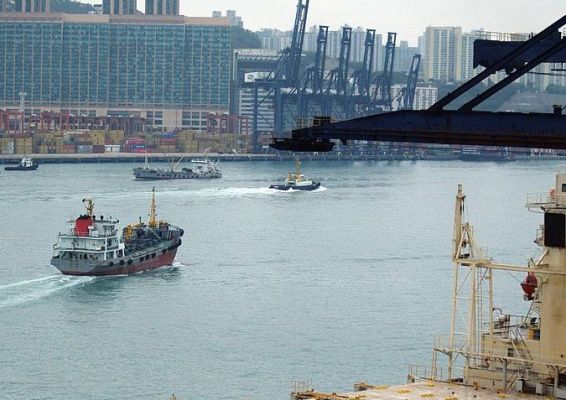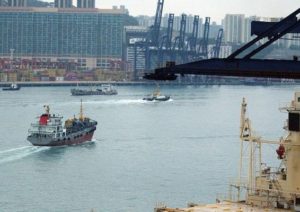The Port of Hong Kong saw its cargo and container throughput as well as vessel calls sustaining declines in the second quarter of 2016 as commodity trade with its overseas markets remained lackluster, according to the Census and Statistics Department (C&SD).
Cargo throughput in the second quarter of 2016 decreased by 8.2% to 62.8 million tonnes compared to the same period a year earlier. Meanwhile, container traffic for the same period contracted 8.3% to 4.87 million TEUs.
Cargo volumes down in Q2, H1
For cargo handled in the second quarter, inward and outward volumes slid by 10.4% and 5.0% to 36.3 million tonnes and 26.4 million tonnes, respectively, compared to the April-June period of 2015.
For inward cargo, imports and transshipments shrank by 12.2% and 8.1% to 19.5 million tonnes and 16.8 million tonnes, respectively.
For outward shipments, exports (including domestic exports and re-exports) increased by 3.6% to 11.0 million tonnes, while transshipments suffered a 10.3% slash to 15.4 million tonnes.
There was a double-digit increase in inward cargo from Malaysia (15.8%). On the other hand, double-digit decreases were recorded for inward cargo from Indonesia (-31.2%), U.S. (-18.3%), Taiwan (-17.6%), China (-16.3%), and Thailand (-11.6%).
For outward shipments, there was a triple-digit increase in tonnage sent to Macao (178.8%), countered by double-digit falls in tonnage to Malaysia (-19.0%), Japan (-11.7%), China (-11.2%), and South Korea (-10.8%).
Meantime, in the first six months of 2016, cargo volume processed fell by 13.4% compared to a year earlier to 118.4 million tonnes. Of the overall figure, inward and outward cargo thinned by 16.7% and 8.5% to 68.6 million tonnes and 49.8 million tonnes, respectively.
On inward cargo, imports and transshipments slid back by 21.4% and 10.3% in the first half of 2016 to 37.8 million tonnes and 30.9 million tonnes, respectively. For outward cargo, exports and transshipments contracted by 2.1% and 12.4% to 20.2 million tonnes and 29.5 million tonnes, respectively.
A double-digit increase was recorded for incoming cargo from Malaysia (12.5%). But double-digit contractions were recorded for cargo from China (-25.3%), Taiwan (-24.7%), U.S. (-23.2%), Thailand (-15.7%), and Japan (-13.8%).
For outward cargo, a triple-digit increase was recorded for shipments to Macao (116.9%). On the other hand, double-digit decreases were logged for cargo brought to Malaysia (-23.0%), Vietnam (-14.8%), Japan (-11.5%), South Korea (-10.9%), China (-10.5%), and the U.S. (-10.2%).
Box traffic in Q2, H1
In the second quarter of the present year, the Hong Kong seaport handled 4.87 million TEUs of containers, down 8.3% compared to a year earlier. Of this, laden and empty containers decreased by 7.7% and 11.8% to 4.18 million TEUs and 0.69 million TEUs, respectively. Among laden containers, inward and outward containers dropped by 6.6% and 8.9% to 2.19 million TEUs and 1.99 million TEUs, respectively.
For inward laden containers, imports and transshipments decreased by 6.4% and 6.7% to 0.71 million TEUs and 1.48 million TEUs, respectively. For outward laden boxes, exports and transshipments went down by 8.0% and 9.2% to 0.61 million TEUs and 1.38 million TEUs, respectively.
Within inward laden containers, imports and transshipments decreased by 7.4% and 8.6% to 1.30 million TEUs and 2.75 million TEUs, respectively. For outward laden boxes, exports and transshipments decreased by 12.1% and 11.9% to 1.14 million TEUs and 2.66 million TEUs, respectively.
Vessel calls slow down
Ocean vessel arrivals in the second quarter of this year decreased by 5.4% to 7,091 against the same period last year, with capacity also declining by 3.2% to 101.2 million net registered tons.
In the first half of 2016, ocean vessel arrivals fell by 7.2% to 13,793, with total capacity also going down by 4.9% to 197.2 million net registered tons.
Photo: pete






